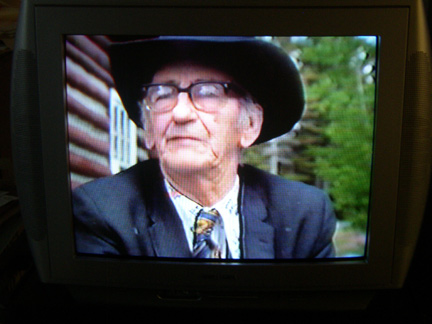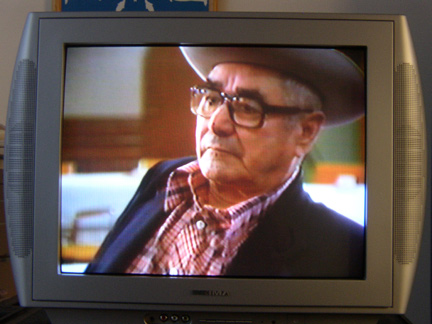![]() ™ The
Canadian Aboriginal Issues Database ©
™ The
Canadian Aboriginal Issues Database ©
Alberta Métis Settlements
Adrian Hope (former Pres. MAA) 
Alberta Métis Policy Relationships
Historical Sketch 1930-1941
|
Maurice L'Hirondelle Former President, FMSA
click to enlarge cover |
Start 1930-31 1932 1933
1934 1935-38 1939 1940-41
Dion, as the Secretary of the Half-breed Association of Northern Alberta, worked closely with Métis, organizing locals and appointing interim councilors. The idea of having locals was specifically Jimmy Brady's and Dion agreed it was an important one.
After meeting on April 5, 1932 with, Reid, the Department Minister, (who was also the Acting Premier at the time), Dion also worked closely with the Deputy Minister of the Department of Lands and Mines, Jack Harvie.
At that meeting, Dion presented Reid with a three-page hand-written summary of Métis history and current issues. Land rights were a subject of this Dion document. While land rights and title never had been far from the surface they did not, however, become part of later Métis policy submissions in 1933 and 1934.
They did show up in 1935, though. Brady was the main author of an eighteen-page submission to the Ewing Commission and this did refer to land rights. In any event, it is important to note that following from these submissions and policy positions, provincial legislation since 1938 has stated that Indian or aboriginal rights or title are not the basis of the legislation.
In 1932, the Minister of Lands and Mines, Reid, his Deputy, Harvie, Dechene and Dion were very aware of the hundreds of people involved in the Métis movement. They believed conflict between Métis and non-Métis settlers over land use was a strong possibility. They had in hand, for example, a petition with 500 names, letters from Dion and Dechene describing conditions and growing tensions, and they had by January 1934 a questionnaire that provided 1011 responses to some basic questions about who the Métis in the province were.
At the same time, Depression-era citizen action was indeed the order of the day in many parts of the province in 1932. December alone saw fourteen hunger strikes and marches in various locations.
In November 1932, Dion worked with Harvie and together they organized the December 28, 1932 meeting of the Métis association in a Catholic church basement in St. Albert. At that meeting the Métis Association became L'Association des Métis d'Alberta et les Territories du Nord-Ouest. The Deputy Minister spoke at this meeting and the Métis executive were elected: Dion, Brady, Norris, Cunningham, and Calihoo. At the beginning of the new year, a report of the meeting went back to Reid and within two months the Legislature, rather than the government, had taken action. Brownlee, the Premier, was reluctant to take any action; he dragged his heels. (see 1933)
**The majority of the writers are the executive council of the newly
formed l'Association des Métis d'Alberta et les Territoires du Nord-Ouest in December 1932: Joseph
Francis Dion, President, Malcolm F. Norris, First Vice-President, James Patrick
Brady, Secretary Treasurer, and in January 1934, Peter C. Tomkins elected as
Third Vice-President. Some letters and reports are by the politicians
responsible for Metis welfare: Joseph M. Dechene, a Liberal MLA, Richard Gavin
Reid (CCF Minister of Lands and Mines and Premier in 1934), George Hoadley (CCF
Minister of Agriculture and acting-Premier at times), J. E. Brownlee (CCF
Premier), W. W. Cross (from 1935 the Social Credit, Minister of Health), William
Aberhart (Social Credit Premier) and others; and there are those written by the
bureaucrats involved in developing and administering Metis policy: J. Harvie
(Reid's Deputy Minister), Frank Buck (Cross' lead bureaucrat in the Bureau of
Relief and Public Welfare***), J. Rankine (a solicitor for Harvie and eventually
the secretary of the Ewing Commission) and
others. ***after 1939 the name is the Bureau of Public Welfare. |

